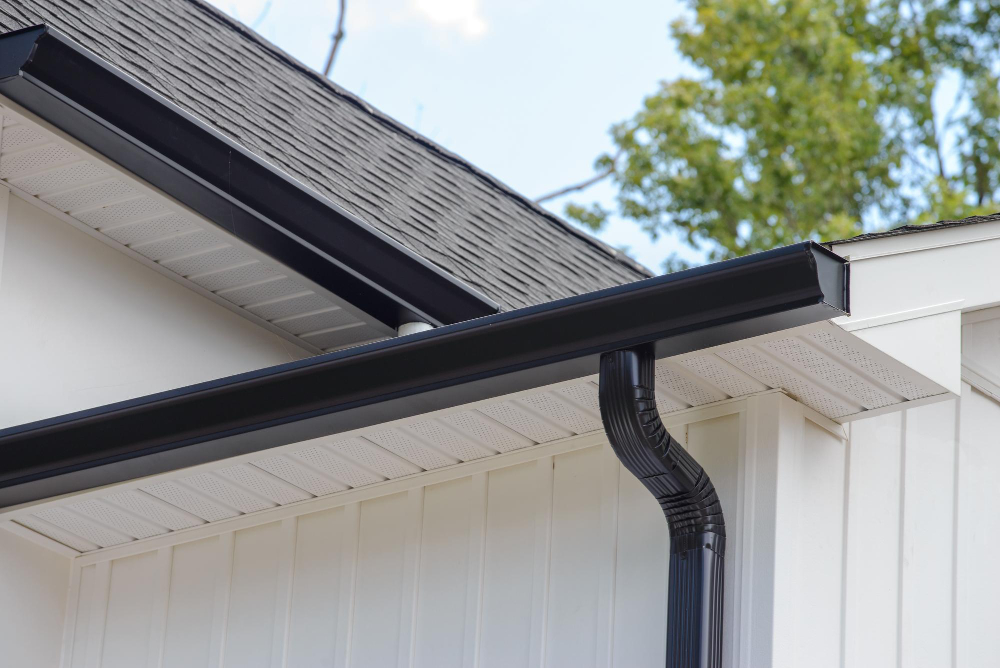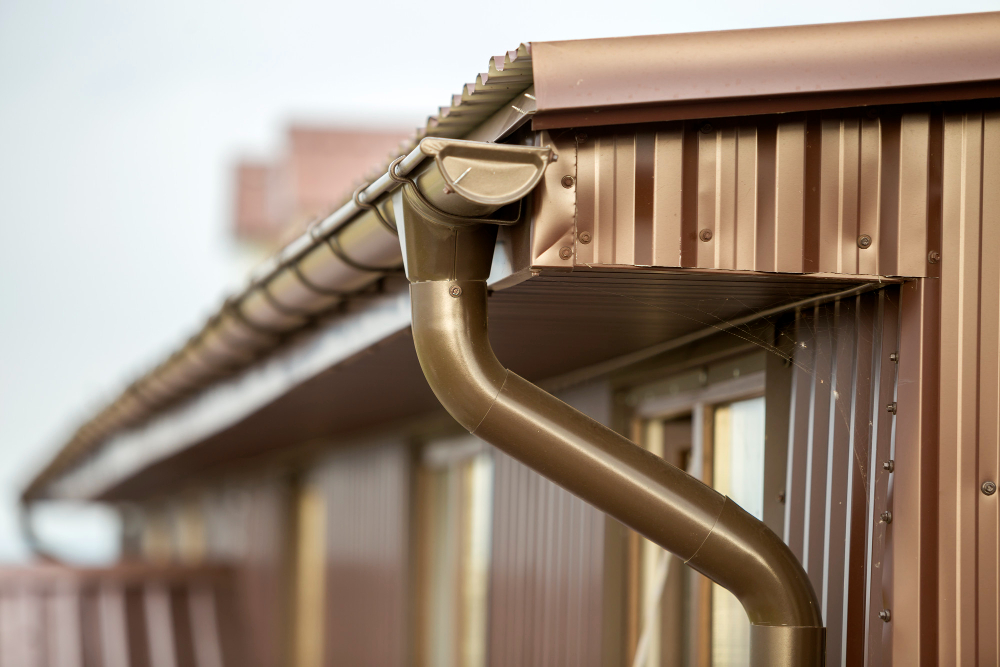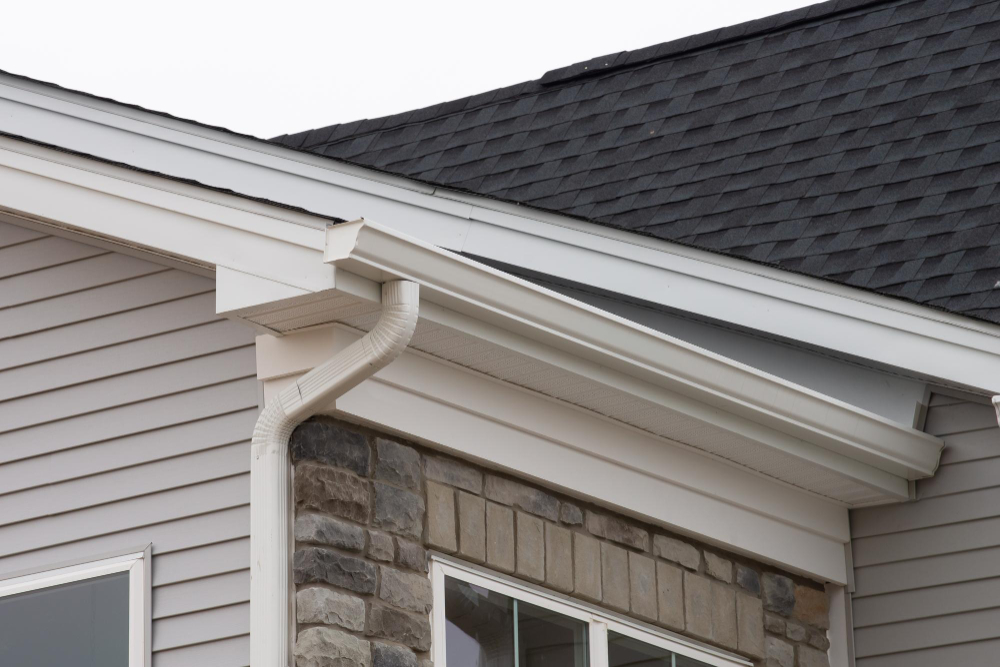We all know gutters play a crucial role to shield your property from water staining, paint damage, wooden rot, etc. Whether you want to build a new home, renovate an existing build, or only want to upgrade your gutters, there are different types of gutters that you can choose.
Most proprietors prefer affordable white aluminum, while some want to feel luxury, so they prefer copper gutters for their homes.
You can choose the type and style of gutters based on how much water your roof can hold and drain. If you have a sloped or steep roof, you need gutters that are efficient at handling large volume of water. In this blog, we will take a look at some of the multiple gutter styles, types, and materials, which will help you pick the right gutters for your home.
Popular Styles of Gutters You Can Consider
Gutters come in multiple shapes, each serving a particular purpose while improving the look of your home. They all help direct rainwater off your roof and away from your house. The distinguishing feature among them is how they are installed.
There are three types of rain gutters people frequently select:
- K-Style Gutters
- Half Round Gutters
- Box Gutters
K-Style Gutters
K-style gutters refer to K-shaped design gutters used in about 80% of modern homes. These gutters feature a different front edge shape that resembles crown molding, complementing your home’s look. They come in various colors and materials, allowing you to pick a K-style gutter that matches your home’s trim or shutters.
They feature a flat back and attach to the fascia board at the top of your home. Being flush with the wall prevents water from running down it. The bends and folds in the metal make these gutters strong and more durable than half-round ones. As one of the solid options, they can handle significant water flow while resembling crown molding to complement your home’s style.
Benefits
- Aesthetic appeal
- Excellent at managing water
- Very strong and long-lasting
- Affordable
- Reduced risk of leaks
- Simple to install yourself
Drawbacks
- Susceptible to clogs
- Difficult to clean
- Sagging issue
- Improper installation causes leakages
Sizes
- 5″ for standard
- 6″ for higher volumes
Half-Round Gutters
These gutters are the most efficient and rinse out rubbish because of their rounded shape. As the name suggests, they consist of a circular pipe split in half, with the upper section open to allow water to enter. This style suits historic or brick homes, as most houses built before 1960 feature this guttering structure. Municipal laws may sometimes require installing half-round gutters to keep the home’s design intact.
Half-round gutters offer an enduring charm along with several practical advantages. Their design enables efficient water drainage, which helps minimize blockage risk compared to square gutters. Additionally, these gutters use round downspouts, which enhance their classic look.
Benefits
- Efficient water flow
- Reduced maintenance
- Traditional look
- Various materials available
- Renowned for beauty and durability
Drawbacks
- Less common than K-style gutters
- Complex installation
- Higher cost
- Shallower, holding less water
Sizes
- 5″ and 6″ sizes

Box Gutters
Box-style gutters are one of the three popular gutter systems commonly found in commercial and residential buildings. Designed for managing large amounts of rainwater flowing off big roofs, these oversized gutters are 6” or wider. The larger the roof, the more rainwater they handle efficiently, preventing potential overflow or damage.
In contrast with traditional roofs that hang awkwardly from the edge of the roofline, box gutters have a big back section that fits effortlessly beneath the roof shingles. This exclusive design involves careful installation during construction to stop water from entering the structure at the roof edge. You can install box gutters on an existing building, but it is best to replace the roof and put on new shingles first for a proper seal.
Benefits
- Unique Look
- Drain More Water
- Seamless Installation
- Long-Lasting
- Custom Built
Drawbacks
- Expensive
- Difficult maintenance
- Risk of water damage
Size
- 5″ and 6″ standard size
- 7” and 8” for large roof
How to Choose the Right Gutter Material for Your Home?
It is crucial to select the right material for your property’s gutter system. For that, you must pay attention to detail and consider the available choices. To choose the right material, there are multiple factors you need to consider:
Roof Pitch
Roof pitch is a critical factor in defining the size and design of gutters. The angle of your roof will significantly impact the way water is channeled away from your house.
Climate
There are local weather conditions that can affect the best gutter material for your area, such as:
Heavy Rainfall: Select materials with high water capacity, like larger K-style gutters or copper or zinc that can handle heavy flow.
Extreme Cold: Consider aluminum or vinyl, which are resilient to freezing temperatures.
Coastal Areas: Select materials resistant to salt air corrosion, such as zinc or stainless steel.
Durability
Durability is an important factor to consider because premium materials tend to last longer than more affordable options.
Expected Life: Copper and zinc usually have the longest lifespan, followed by aluminum and steel.
Maintenance Needs: Aluminum and vinyl require less maintenance than copper or zinc, which may develop a patina over time.
Cost
If you’re looking for budget-friendly options, consider vinyl or aluminum. For a more stylish and durable choice, you can choose copper and zinc, which are great investments for the high-end market.
Budget-Friendly: Vinyl and aluminum are normally the most reasonable options.
High-End: Copper and zinc are considered premium materials with a higher price tag.

Material
When it comes to selecting gutters for your space, you need to have a comprehensive know-how of the materials. Multiple types of gutter material are available in a wide range of colors and distinctive finishes.
Vinyl: They come in different colors but are less durable than metal. Many people opt for vinyl for DIY projects because they are lightweight, cost-effective, and easy to install.
Steel: These types of material are strong and resist rust. They work well in areas with harsh weather, as they are made of galvanized or stainless steel.
Copper: Copper gutters are popular because they are attractive, long-lasting, and can be found in luxury homes. They develop a unique patina that improves a home’s appearance with time.
Aluminum: Light and rust-resistant, aluminum gutters are a popular home choice. They offer versatility and come in various colors, making them cost-effective.
Wood: Wood gutters are rarer but can still be seen in old mansions. They need regular upkeep and are usually constructed from cedar or redwood.
Gutter Size
The size of your gutters should be carefully determined based on your roof’s dimensions and pitch. This ensures that they can effectively handle heavy rainfall without the risk of overflowing.
Aesthetics
It is important to consider how the color and style of your gutters will balance the overall style of your home’s exterior. Choosing the right type of gutter can boost the aesthetic appeal and uphold the harmony of your property’s design.
Installation Method for Rain Gutters
Installing rain gutters involves following a few steps, from measuring and marking the slope to installing downspouts.
Measure and Mark the Slope: Identify the perfect downspout locations and use a chalk line to indicate a slight downward slope along the fascia board. Typically, there can be about a 1/4-inch drop for every 10 feet of gutter run.
Install Fascia Brackets: Attach brackets to the fascia board using screws, spacing them evenly along the gutter line to offer support.
Cut Gutter Sections: Measure and cut them to size using a saw, ensuring they match the length desired for your roofline.
Assemble Gutters on the Ground: Before lifting to the roof, assemble the gutter sections by connecting them with miters or connectors and securing with screws.
Install Gutters onto Brackets: Carefully lift the assembled gutter sections and slide them onto the installed brackets, ensuring they are level and properly aligned.
Attach End Caps: Fix end caps to the ends of the gutters for preventing leakages.
For professional home construction and framing services, Rockford Coastal Homes delivers quality craftsmanship and accuracy, ensuring your residence stands strong for future years.


